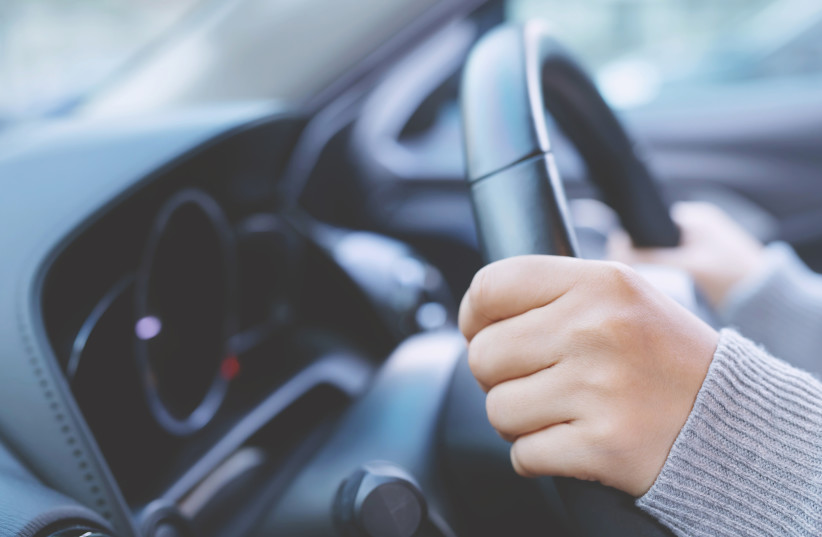Momentary halting of breathing dozens or even hundreds of times during one’s sleep – a condition called obstructive sleep apnea (OSA) – is very dangerous.
Not only do they make the victim very sleepy during the day and a dangerous driver, but OSA significantly raises the risk of coronary artery disease, heart attack, heart failure and stroke. Obstructive sleep apnea also increases the risk of heart rhythm problems that are known to cardiologists as arrhythmias.
Sleepiness while driving is potentially fatal, and it is recommended that a driver who starts to feel tired should stop and have a rest.
However, some may use various countermeasures to try to stay alert. When an OSA patient uses more than three strategies to stay alert while driving, it could be a sign of excessive sleepiness due to OSA, according to a study just published by British researchers in the journal ERJ Open Research entitled “An exploratory study evaluating the use of coping strategies whilst driving in Obstructive Sleep Apnoea Syndrome patients and controls.”

Majority of people with OSA are not aware of the problem
People with OSA often snore loudly, their breathing starts and stops during the night, and they may wake up several times. Around one in five people are estimated to have OSA, but the majority of sufferers don’t realize they have a problem.
Researchers say that asking people whether they use strategies, such as opening the window, drinking tea and coffee or turning up the radio, to stay alert on the road could help spot those with OSA who may be at a higher risk of a driving incident.
OSA closely linked to driving incidents
The study was conducted by respiratory medicine consultant Dr. Akshay Dwarakanath and colleagues at St James’s University Hospital in Leeds. “Up to one-fifth of collisions on the road may be caused by fatigue or sleepiness,” he said.
"Many OSA patients drive either for personal or for professional reasons, and there is good evidence to suggest that some patients are at increased risk of collisions on the road.”
The research involved 119 people with OSA who were not yet receiving any treatment compared to 105 other people who did not have OSA. All the people taking part answered questions about their sleepiness in general, their sleepiness while driving, any strategies they used to stay alert while driving and any history of driving incidents, such as collisions.
The team found that people with OSA were more likely to use techniques to stay alert at the wheel compared to those without OSA.
Nearly a third of people with OSA said they frequently used more than three coping strategies. None of the people who did not have OSA used more than three coping strategies.
They also found that people with OSA who used more than three strategies felt sleepier in general, more sleepy while driving, and were more likely to have experienced a crash (22.8% compared to 2.4% of OSA patients using fewer coping strategies).
The strategies mentioned most often by people with OSA were opening the window, drinking tea or coffee, and turning up the radio. Other strategies were singing or talking to themselves, shifting positions in the seat, chewing gum or eating, stopping for a walk, fidgeting or exercising, stopping for a nap, and stopping to wash their face in cold water.
“Doctors are often asked to make recommendations about their patient’s fitness to drive. This can be challenging as it can have major implications on a patient’s livelihood, particularly if they are a professional driver,” said Dwarakanath.
“However, there is a duty of care on doctors to discourage patients from driving if are at high risk of causing a collision.
"Our research suggests that untreated OSA patients often use coping strategies that could be surrogate markers of sleepiness. Asking about these strategies in the clinic may help doctors identifying patients who are at risk of driving incidents and to advise appropriately.”
Dr. Esther Schwarz, who is a member of the European Respiratory Society’s group on sleep-disordered breathing based at University Hospital Zurich in Switzerland and was not involved in the research, said: “Obstructive sleep apnea is of high public health relevance due to its high prevalence, symptoms that impair quality of life and potential cardiovascular consequences.
"In addition to choking, fragmented sleep and unrefreshing sleep, possible symptoms include difficulty concentrating, tiredness and a tendency to fall asleep during the day.
"Fortunately, awareness of OSA has increased somewhat in recent years. Today, treatment recommendations are based on the different risk factors, symptom groups and cardiovascular consequences of certain OSA types. Various treatment approaches geared to different types of OSA can be offered to successfully treat the symptoms, including daytime sleepiness.”
